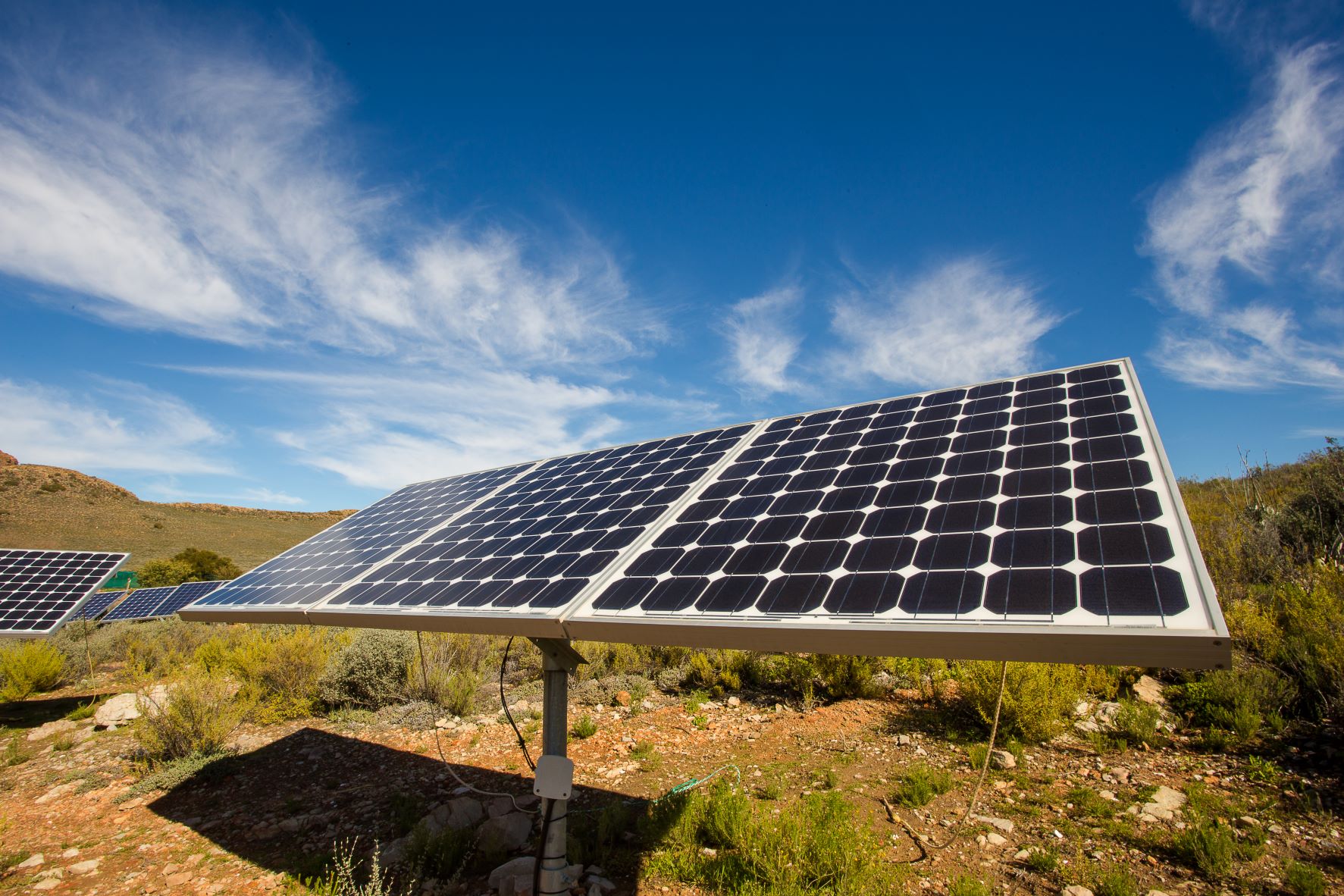Science for renewable energy - WCSSP case study
Find out how the Weather and Climate Science for Service Partnership (WCSSP) programme is advancing science to support the energy sector.
Understanding how weather and climate impact these systems is vital for building resilience in a changing climate. Accurate predictions of weather conditions at site specific locations help to predict output from wind and solar energy systems, which helps to ensure the grid is balanced between demand and supply, reducing the risk of power outages. The WCSSP South Africa project has been investigating how site-specific solar radiation forecasts can be used to predict solar power in South Africa.
Solar energy in South Africa
South Africa is currently experiencing a mismatch between electricity demand and supply. This has resulted in frequent load shedding, which is the deliberate shutdown of electric power in parts of a power-distribution system to prevent the failure of the entire system when demand threatens to exceed supply.
The stress on the energy sector is expected to be further exacerbated by the impacts of climate change resulting in detrimental impacts on energy-intensive industry sectors that are crucial for the South African economy such as agriculture. Building a resilient energy network is therefore important from both an economic and environmental perspective, and reliable renewable energy production forms a crucial element of this network.
The South African Department of Energy has committed to achieving 40% renewable energy by 2030, with plans that a third of this supply will come from solar energy. South Africa is well placed to capitalise on solar energy, with an average of 2500 sunshine hours per year.
International collaboration to forecast solar power
The Met Office and South African Weather Service have been investigating how site-specific solar radiation forecasts can be used to predict solar power, by comparing site-specific solar radiation forecasts to observations at 12 sites across South Africa.
“Through the WCSSP South Africa project, we have developed and shown that forecasts for solar radiation in South Africa are accurate up to three days in advance. This information is relevant to support a growing renewable energy sector in South Africa..” Karen Walter, Managing Scientific Consultant, Met Office.
It is hoped that these forecasts could enable energy system operators to optimally dispatch solar and other energy sources to balance the generation and demand and enable the electric grid to be more flexible and adapt to changing conditions as well as minimize disruptions.
‘Through collaboration between South Africa and the UK, we have made good progress on the development of solar power forecasting. We are hoping to move to wind power forecasting in the coming year or two.’ Henerica Tazvinga, South African Weather Service.




